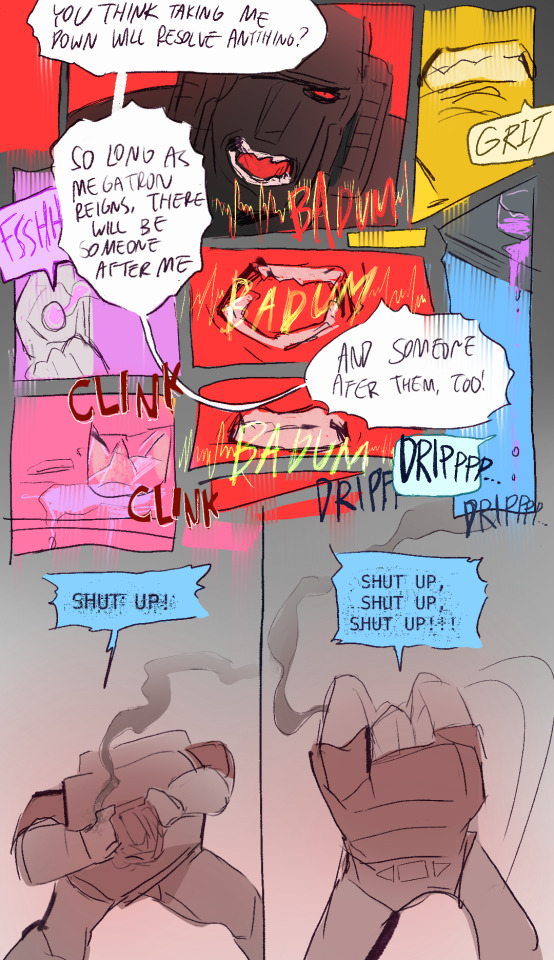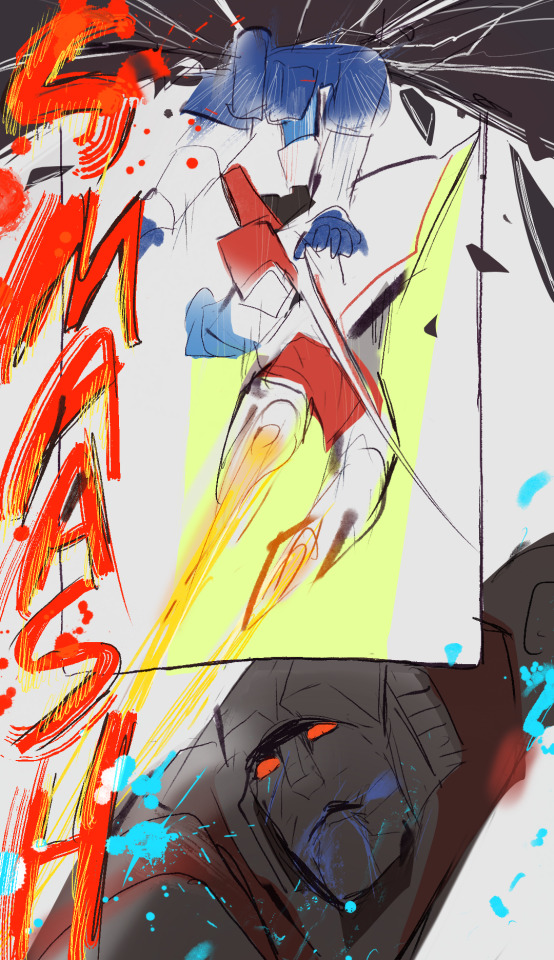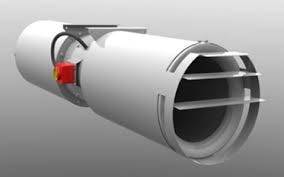#Jet Fans
Explore tagged Tumblr posts
Text

rivals.
#sonic the hedgehog#sth#sonic#sonic the hedgehog fanart#sth fanart#sonic fanart#shadow the hedgehog#shadow the hedgehog fanart#metal sonic#metal sonic fanart#knuckles the echidna#knuckles the echidna fanart#surge the tenrec#surge the tenrec fanart#blaze the cat#blaze the cat fanart#silver the hedgehog#silver the hedgehog fanart#jet the hawk#jet the hawk fanart#I love the idea that every rival besides Metal is intimidated by Sonic to some degree#not Metal tho#Metal matches Sonic's freak#if I was a True Fan(tm) I would've included Johnny#btw I imagined Sonic saying something here but I'll leave that up to everyone else's imagination lmfao
5K notes
·
View notes
Text

Who up thinking about skyfire / jetfire and starscream…
#art#my art#fan art#fanart#transformers#transformers one#transformers fandom#transformers art#transformers fanart#transformers robots in disguise#mtmte#skyfire#jetfire#starscream fanart#starscream#starscream x skyfire#starscream x jetfire#skystar#jet star#jetstar#transformers ships#tfone
4K notes
·
View notes
Text
Chaper 1: Lost N Found part 1,2





#sonic the hedgehog#sonicmemorylossau#sonic memory loss au#shadow the hedgehog#sonic art#sonic fanart#sonic au#SONIC#SONICAU#sonicAU#sonic comics#sonic fan comic#sonic amnesia#jet the hawk#silver the hedgehog#miles tails prower#espio the chameleon#Nick the hedgehog#amy rose#Nickamy
1K notes
·
View notes
Text




avatar boys! 👻
#avatar the last airbender#aang#sokka#zuko#jet#atla#art#avatar aang#drawing#artists on tumblr#my art#fan art#original art#illustration#sketch#avatar sokka#avatar zuko#avatar jet#atla fanart#avatar fanart#avatar fandom#portraits#digital artist#avatar icons
3K notes
·
View notes
Text


Happy pride to those celebrating. Unhappy pride to those not



#art#fanart#drawing#digital#painting#fan art#logurt#wolverine#logan howlett#nightcrawler#kurt wagner#lgbt#lgbtqia#lgbtq+#pride#pride month#xmen#x-men#x men#i hate the inconsistency of the xmen tags but whatever#anyway happy pride yippie#sadly being gay is illegal in my country so the horrors persist but so do i#also i am a trans wolverine truther. once again stating that there is something so inexplicably ftm coded about this dude#and yes that second blue-green panel is low key softcore#i am also a shiny-black-cat kurt truther#that man is not blue he's jet black just had very shiny fur. i will die on this hill#and with ear tufts. catboy coded
1K notes
·
View notes
Text
2/3
they're fighting! someone come break them up!!











previous next
#switcherooAU#again: there will be no winner or loser i just wanted to have some fun and draw them fighting!#i don't really want to place one character over another#i hope to give fans of both something to enjoy :D#ok we're going into a ramble weoeoeoe#starscream would generally be out of his forte on ground battles#so soundwave has a major physical advantage in that regard#but starscream is very very fast#i imagine they're both typically ranged fighters?? starscream obv cus he's a jet and soundwave with his cassettes and sound blasts#i dont think they would get up close a lot#this is just entirely personal#starscream#soundwave#transformers#maccadam#comic#artists on tumblr#tf art#illustration#zorangetf
2K notes
·
View notes
Text
What is a jet fan called?

Are you curious to know what a jet fan is called? Well, you’ve come to the right place! In this article, we will uncover the official name for a jet fan and provide you with all the information you need. Jet fans are crucial components in various industries, including aviation and engineering. They are known for their powerful airflow and ability to regulate temperature and pressure. However, people often wonder if there is a specific term or name used to refer to these impressive machines. The answer is yes! The official name for a jet fan is a turboprop engine. This unique term encapsulates the essence of a jet fan’s design and function. So, the next time you hear the term “turboprop engine,” you can now confidently visualize the powerful jet fan in action. Stay tuned as we delve deeper into the fascinating world of jet fans and explore their various applications.
Purpose and function of jet fans Jet fans, or turboprop engines, serve a crucial purpose in a wide range of industries. These powerful machines are designed to generate a strong airflow by using the principles of jet propulsion. The primary function of a jet fan is to provide thrust, which propels an aircraft or vehicle forward. This thrust is created by the interaction between the engine’s rotating blades and the high-speed exhaust gases expelled from the engine. Apart from providing propulsion, jet fans also play a vital role in regulating temperature and pressure within various systems.
The purpose and function of jet fans can vary depending on the specific industry and application. In aviation, turboprop engines are commonly used in smaller aircraft and helicopters, where their efficiency and reliability are highly valued. These engines provide a balance between speed and fuel efficiency, making them ideal for short-haul flights and regional transportation. Additionally, jet fans are extensively used in engineering applications, such as power generation and industrial processes. Their ability to generate high airflow and maintain precise control over temperature and pressure makes them indispensable in these sectors. The versatility of jet fans allows them to be adapted to a wide range of applications, making them an essential component in many industries.
Different types of jet fans Jet fans come in various types, each designed to meet specific requirements and applications. These different types of jet fans can be categorized based on their design, size, and operating principles. Let’s explore some of the most common types of jet fans:
1.Axial Jet Fans: Axial jet fans are characterized by their straight-through airflow path. These fans have a cylindrical shape with rotating blades that draw in air from one end and expel it from the other. They are commonly used in applications where high airflow rates are required, such as cooling systems and ventilation systems. Axial jet fans are known for their efficiency and low noise levels, making them suitable for both indoor and outdoor environments. 2. Centrifugal Jet Fans: Centrifugal jet fans, also known as radial jet fans, operate on a different principle than axial jet fans. Instead of a straight airflow path, these fans use a centrifugal impeller to draw in air from the sides and expel it radially. Centrifugal jet fans are often used in confined spaces where space is limited, such as underground car parks and tunnels. Their compact design allows for easy installation and efficient airflow distribution. 3. Mixed Flow Jet Fans: As the name suggests, mixed flow jet fans combine the characteristics of axial and centrifugal jet fans. These fans have a hybrid design that combines the advantages of both types. Mixed flow jet fans are commonly used in applications where a balance between airflow rate and pressure is required, such as ventilation systems in commercial buildings and industrial facilities. Their versatile design makes them suitable for a wide range of applications. 4. Ducted Jet Fans: Ducted jet fans are designed to operate within enclosed ducts or tunnels. These fans have a specialized housing or duct surrounding the blades, which helps to direct the airflow and increase efficiency. Ducted jet fans are commonly used in ventilation and smoke control systems in underground tunnels and car parks. Their ability to efficiently move air in confined spaces makes them crucial for maintaining air quality and safety.
These are just a few examples of the different types of jet fans available in the market. The choice of jet fan depends on the specific requirements of the application, including airflow rate, pressure, noise levels, and space limitations. Understanding the different types of jet fans can help you make an informed decision when choosing the right fan for your needs.
Jet fan components and construction To understand how jet fans work, it’s essential to familiarize yourself with their key components and construction. Jet fans consist of several crucial parts that work together to generate thrust and regulate airflow. Let’s take a closer look at the main components of a typical jet fan:
1. Compressor: The compressor is one of the most critical components of a jet fan. It is responsible for compressing incoming air and delivering it to the combustion chamber. Compressors can be of various types, including axial compressors and centrifugal compressors. The type of compressor used depends on the specific design and application of the jet fan. 2. Combustion Chamber: The combustion chamber is where the fuel is mixed with compressed air and ignited to produce high-temperature gases. These gases expand rapidly, creating a high-pressure exhaust stream. The design of the combustion chamber is crucial for efficient fuel combustion and minimizing emissions. 3. Turbine: The turbine is driven by the high-temperature and high-pressure exhaust gases from the combustion chamber. It is connected to the compressor via a shaft, allowing the turbine to convert the energy of the exhaust gases into mechanical energy. The turbine drives the compressor, creating a continuous cycle of compression, combustion, and expansion. 4. Exhaust Nozzle: The exhaust nozzle is the final component of a jet fan through which the high-speed exhaust gases are expelled. The shape and design of the exhaust nozzle play a crucial role in determining the direction and velocity of the exhaust gases, ultimately influencing the thrust generated by the jet fan.
In addition to these main components, jet fans also include various auxiliary systems, such as fuel systems, lubrication systems, and control systems. These systems work in harmony to ensure the efficient and safe operation of the jet fan. The construction of jet fans involves precision engineering and the use of high-quality materials to withstand the harsh conditions and high temperatures associated with their operation.
Understanding the components and construction of jet fans can give you valuable insights into their functionality and performance. This knowledge can be particularly useful when it comes to maintenance and troubleshooting, as it allows you to identify and address any issues that may arise.
Benefits of using jet fans Jet fans offer numerous benefits in various industries and applications. Their unique design and functionality make them a preferred choice for many professionals. Let’s explore some of the key benefits of using jet fans:
1. Efficiency: Jet fans are known for their high efficiency, both in terms of airflow generation and fuel consumption. Their ability to create powerful airflow while consuming relatively less fuel makes them an environmentally friendly and cost-effective option. This efficiency is achieved through advanced engineering and optimization of airflow paths. 2. Versatility: Jet fans are incredibly versatile and can be adapted to a wide range of applications. Whether it’s aviation, engineering, or ventilation systems, jet fans offer flexibility and reliability. Their ability to provide both propulsion and precise airflow control makes them suitable for diverse industries and purposes. 3. Temperature and Pressure Regulation: Jet fans are designed to regulate temperature and pressure within various systems. This feature is particularly valuable in applications where maintaining optimal conditions is crucial, such as power generation plants and industrial processes. Jet fans can efficiently distribute airflow, cool down equipment, and control pressure levels, ensuring smooth and efficient operation. 4. Safety and Control: Jet fans play a vital role in maintaining safe and controlled environments. In aviation, turboprop engines are designed to meet stringent safety standards and provide reliable operation. In ventilation systems, jet fans help to control airflow and remove pollutants, ensuring a healthy and comfortable environment for occupants. 5. Compact Design: Jet fans are known for their compact design, which allows for easy installation and integration into various systems. Their small size and lightweight construction make them suitable for applications where space is limited, such as underground tunnels and aircraft.
These are just a few examples of the benefits jet fans offer. The specific advantages of using jet fans can vary depending on the application and industry. However, one thing is certain: jet fans provide efficient, reliable, and versatile airflow solutions that are essential for modern-day industries.
Jet fan applications in various industries Jet fans find extensive applications in a wide range of industries, where their powerful airflow and temperature control capabilities are highly valued. Let’s explore some of the key industries that rely on jet fans:
1. Aviation: The aviation industry heavily relies on jet fans for propulsion and efficient airflow control. Turboprop engines are commonly used in smaller aircraft and helicopters, where their ability to balance speed, fuel efficiency, and reliability is highly valued. Jet fans play a crucial role in enabling short-haul flights, regional transportation, and general aviation. 2. Engineering and Power Generation: Jet fans are widely used in engineering applications, such as power generation plants and industrial processes. Their ability to regulate temperature and pressure makes them essential for maintaining optimal conditions within systems. Jet fans are used to cool down equipment, control airflow, and ensure efficient operation in power plants, refineries, and other industrial facilities. 3. Ventilation and HVAC Systems: Jet fans are extensively used in ventilation and HVAC (Heating, Ventilation, and Air Conditioning) systems in commercial buildings, underground tunnels, car parks, and other enclosed spaces. These systems rely on jet fans to distribute airflow, remove pollutants, and maintain a comfortable environment for occupants. Jet fans are particularly valuable in confined spaces where traditional ventilation systems are not feasible. 4. Automotive and Transportation: Jet fans are also utilized in the automotive and transportation industries. In hybrid and electric vehicles, jet fans can be used for cooling the battery packs and improving overall efficiency. Additionally, jet fans are employed in tunnel ventilation systems to remove exhaust fumes and maintain air quality in underground roadways. 5. Marine and Naval Applications: Jet fans have found applications in the marine industry, where they are used in propulsion systems for boats and ships. These marine jet fans provide efficient thrust and maneuverability, making them suitable for various vessels, including ferries, yachts, and naval vessels.
These are just a few examples of the industries that rely on jet fans for their functionality and performance. The widespread use of jet fans across different sectors highlights their importance and the value they bring to various applications.
How to choose the right jet fan for your needs Choosing the right jet fan for your specific needs can be a daunting task, considering the wide variety of options available in the market. However, by considering certain factors and criteria, you can make an informed decision. Here are some key factors to consider when choosing the right jet fan:
1. Airflow Requirements: Determine the airflow requirements of your application. This includes considering factors such as the volume of air that needs to be moved, the pressure requirements, and any specific airflow patterns that need to be achieved. Understanding these requirements will help you identify the appropriate jet fan that can meet your needs. 2. Space Limitations: Consider the available space for installation. Jet fans come in various sizes and designs, so it’s essential to choose a fan that can be accommodated within the available space. Take into account any physical constraints, such as height restrictions or limited access points, that may impact the installation. 3. Noise Levels: Evaluate the noise levels produced by the jet fan. Depending on the application, noise levels may be a critical factor to consider. For instance, in residential or office buildings, low noise levels are typically desired to maintain a quiet and comfortable environment. Ensure that the chosen jet fan meets the required noise regulations and standards. 4. Efficiency and Energy Consumption: Consider the efficiency and energy consumption of the jet fan. Look for fans that have high efficiency ratings and consume lesser energy. Energy-efficient jet fans can help reduce operating costs and have a positive impact on the environment. 5. Maintenance and Serviceability: Evaluate the maintenance requirements of the jet fan. Look for fans that are easy to maintain and service. Consider factors such as accessibility to components, availability of spare parts, and the reputation of the manufacturer for after-sales service and support. 6. Safety and Compliance: Ensure that the chosen jet fan meets all safety and compliance standards relevant to your industry and application. This includes factors such as fire safety, explosion-proof ratings, and compliance with industry regulations.
By considering these factors and conducting thorough research, you can choose the right jet fan that meets your specific needs and requirements. Consulting with industry experts and manufacturers can also provide valuable insights and guidance in the selection process.
Maintenance and troubleshooting of jet fans
Proper maintenance and regular troubleshooting are essential for the efficient and reliable operation of jet fans. Neglecting maintenance can lead to reduced performance, increased energy consumption, and even costly breakdowns. Here are some key maintenance and troubleshooting tips for jet fans:
Regular Inspections: Schedule regular inspections to check for any signs of wear and tear, loose connections, or abnormal vibrations. Inspect the fan blades, compressor, combustion chamber, and exhaust nozzle for any damage or deformation. Regular inspections can help identify potential issues before they escalate into major problems. 2. Cleaning and Filtration: Clean the jet fan regularly to remove any dirt, debris, or contaminants. This includes cleaning the fan blades, intake filters, and any other accessible components. Clogged filters can reduce airflow and strain the fan motor, leading to decreased performance. Ensure that the intake filters are regularly replaced or cleaned to maintain optimal airflow. 3. Lubrication: Proper lubrication is crucial for the smooth operation of the jet fan. Follow the manufacturer’s guidelines for lubrication intervals and use the recommended lubricants. Over-lubrication or under-lubrication can lead to premature wear and affect the performance of the fan. Regularly check the lubrication levels and top up as necessary. 4. Monitoring and Control Systems: Utilize monitoring and control systems to keep track of the fan’s performance and detect any abnormalities. These systems can provide real-time data on parameters such as temperature, pressure, and vibration levels. Monitoring systems can help identify potential issues and facilitate proactive maintenance and troubleshooting. 5. Safety Precautions: Adhere to safety precautions when performing maintenance tasks. Ensure that the jet fan is properly shut down and isolated from power sources before conducting any maintenance
Read more related blog: What are the advantages of using axial flow fans in industrial applications?
0 notes
Text

I cant resist more Concorde….
Featuring jetfire and starscream, they adopt him in my heart 💔
#transformers#maccadams#maccadam#tf fanart#jetfire#jet star#jetstar#starscream#transformers fan character#concorde#fanart
546 notes
·
View notes
Text

Introducing the adopted son of Jet the Hawk, Rocket the Rooster! 😁
Some info:
Was found as an orphan by Jet when he was very young. He was taken under Jet's wing after being caught trying to steal from the Babylon Rogues. Despite initially being seen as an apprenticeship of sorts, Jet and Rocket eventually grew to see each other as father and son.
He is rivals with Stellar the Hedgehog and is love rivals with Camellia the Cat. Stellar thinks he is super cool, and she has a crush on him. Camellia hates him with a fiery passion. 😂
When he came out, he chose the name "Rocket" to cement his place among the Babylon Rogues.
He was raised to view Sonic (and by extension, Stellar) as rivals/competition. Jet is very happy to get under Sonic's skin by having his son outdo (and potentially romance???) his daughter.
Flirts with Stellar when they compete to try and get the upper hand by distracting her. She is too gullible to recognize he is just doing it to win.
Affectionately called "Rocky" by friends and family.
Both Sonic and Shadow don't like him being around Stellar.
Less of a showboat than Jet, but still has an ego.
Doesn't actually catch feelings for Stellar until she realizes what a dick he is and wrecks his shit. It is the second she kicks him so hard he sees stars that he understands why she is named "Stellar". By that point, of course, Stellar has written him off (much to Camellia's delight).
#my art#rocket the rooster#jet the hawk#fankid#babylon rogues#storm the albatross#wave the swallow#stellar the hedgehog#camellia the cat#sonic#sonic the hedgehog#sth#sonic oc#sonic fan character#sonic original character#sonic art#sonic fandom#sth oc#fankid au
2K notes
·
View notes
Text

jetko week 2024
day 4 : sparring
#jetkoweek2024#jetkoweek#jetko#jetko week 2024#jetko week#atla jetko#jet atla#zuko#atla zuko#fire lord zuko#atla jet#atla#avatar the last airbender#atla fan art#avatar the last airbender fan art#my art : atla
1K notes
·
View notes
Text

traditional art for once,, I needed a break from digital art
#sonic the hedgehog#sonic fanart#sonic fandom#sonic generations#shadow the hedgehog#sonic x shadow generations#sonadow#shadow the ultimate lifeform#sonic riders#sonic free riders#sonic riders zero gravity#jet the hawk#babylon rogues#sth fanart#sth art#sth fandom#sth#sonic art#sonic boom#sonic#sonic the hedgehog fan art#sonic the hedgehog fanart#sonic the hedghog fandom#sonic the hedghog fanart#sonic x shadow dark beginnings#sonic x shadow fanart#sonic x shadow#sonadow art#sonadow fanart#sonic movie 3
525 notes
·
View notes
Text

"My Star..."
I'm not recovering from this
#WHAAAAATTTTTT#RATS IN MY BRAIN#I CAN'T STAND THEM#Every day. i think. about them.#why can't they have a happy ending#i wake up and think...“mhhmm skystar...”#Also New Tf fan#Hello Tf community#transformers#transformers starscream#starscream#skystar#skyfire#transformers skyfire#tf skyfire#tf starscream#tf earthspark#transformers g1#tf skystar#Jetfire#jet star#jetscream#my post#drawing#my art#starscream x skyfire#skyfire x starscream#transformers jetfire#tf jetfire#jetfire x starscream
466 notes
·
View notes
Text

Clone Force 99 Tactics 💥
>Who needs a turret gun? Simply become the turret gun. The new and improved Parental Defense Tower.
Close ups:



#starships and jet troopers fear him#the bad batch#tbb#saw this in an anime once and i was like ‘CF99 would do that’ and so they did#i couldn’t not have hunter amused about it#he’s so proud of his arc trooper look at him go#taking supportive leader to another level#nothing like a cybernetic knee to the back#omega has never seen such excitement in her life#protecc the baby#2024#tbb echo#tbb hunter#tbb omega#star wars#fan art#artists on tumblr
548 notes
·
View notes
Text




Sonic stufff
#digital art#fan art#fanart#sonic fanart#silver the hedgehog#jet the hawk#infinite the jackal#cream the rabbit#espio the chameleon#sonic chao#knuckles the echidna
445 notes
·
View notes
Text
To be clear, Steve is nice. He says “good morning” and “please” and “thank you” and “have a nice day.” And he means them! He is grateful to the custodians and he does hope they have a nice day.
But Eddie Munson has been here six months and he made all of them—all five custodians in the building—individual thank you baskets for custodian appreciation day. They’re personalized! They have person-specific cards and themes and socks. There’s a gift card and a bag of candy specific to each custodian’s tastes and personalized reusable water bottles. One guy’s even has the Jets’ logo on it. They live in Indianapolis!!!!
The second Eddie has finished unloading the gifts at his cubicle—the custodians won’t arrive for another hour, these things will just be staring at Steve from across the room—he stomps over. His cube is already decked out in weird band posters and mini figures of monsters and a fucking box painted to look like a treasure chest that says “take what you need!” (It’s full of things like tampons and pads and band aids and ibuprofen and a few granola bars and Bobby pins and okay, yes, one time Steve’s tummy hurt and he took one (one!!!!!) Tums from the travel sized bottle in there but he did NOT tell anyone about it). Steve hates it. Hates that his cubicle has exactly two photos (one of him with Robin and one of him with the kids), a mostly-dead plant, and a bobble head of Bruce Springsteen he got at an estate sale four years ago.
“Munson!” He hisses into the 7:06AM silence of their office. Only, like, four people are here this early—and two of them are at Eddie Munson’s cubicle.
Eddie jumps, was focused on pulling out his breakfast (an apple with peanut butter and a thermos of black coffee and Steve hates that he knows that too). Looks up at Steve with sleepy eyes, “What’s up, Harrington? Looking forward to the game this weekend?”
Steve is, like, barely a Colts fan. But Eddie knows that—he squints—Larry is a Jets fan?
“Why the hell would you do this, man?”
Eddie’s brows furrow, and before he can ask Steve gestures at the baskets, “What is wrong with you?”
Now Eddie looks very awake. His eyes narrow and Steve’s heart starts pounding.
Eddie stands—and he’s not, like, that much taller than Steve, only a few inches, but Steve must be cowering because he suddenly feels tiny.
“Because, Steven—“ Steve flinches—“these people get up every day and come to do their job of cleaning up after slobs and disrespectful ungrateful assholes and barely receive eye contact from most of you, much less acknowledgement of their humanity or, I don’t know, work? So I thought they’d appreciate it if they actually felt seen and valued for once.”
Steve Harrington is nothing if he is not grossly, unnecessarily competitive, and that trait is rearing its ugly head.
“You want value?” He demands, poking Eddie in the chest. His eyes widen, jaw dropping. “I’ll show you value, Munson.”
He stomps back to his cubicle to grab his phone and wallet, stupid ID lanyard swaying as his whole body vibrates with rage. When he punches the elevator button, he stares at himself in the silver of the elevator doors—hands on hips, foot tapping, hair askew—and then looks back at Eddie, who hasn’t moved and has a pretty pink flush on his cheeks.
It’s only now that Steve realizes maybe he’s being a little weird. Whatever, he’s got forty five minutes, two pastry shops and five boutiques nearby at his disposal, and a totally normal burning need to prove to Eddie that he, also, is a good and thoughtful person.
It is so on.
#steddie#steve Harrington#Eddie Munson#Steve x Eddie#office au#my favorite custodian in high school was named Larry#he was the best and we’re Facebook friends and he retired and is loving being a grandpa#he wasn’t a Jets fan tho
202 notes
·
View notes